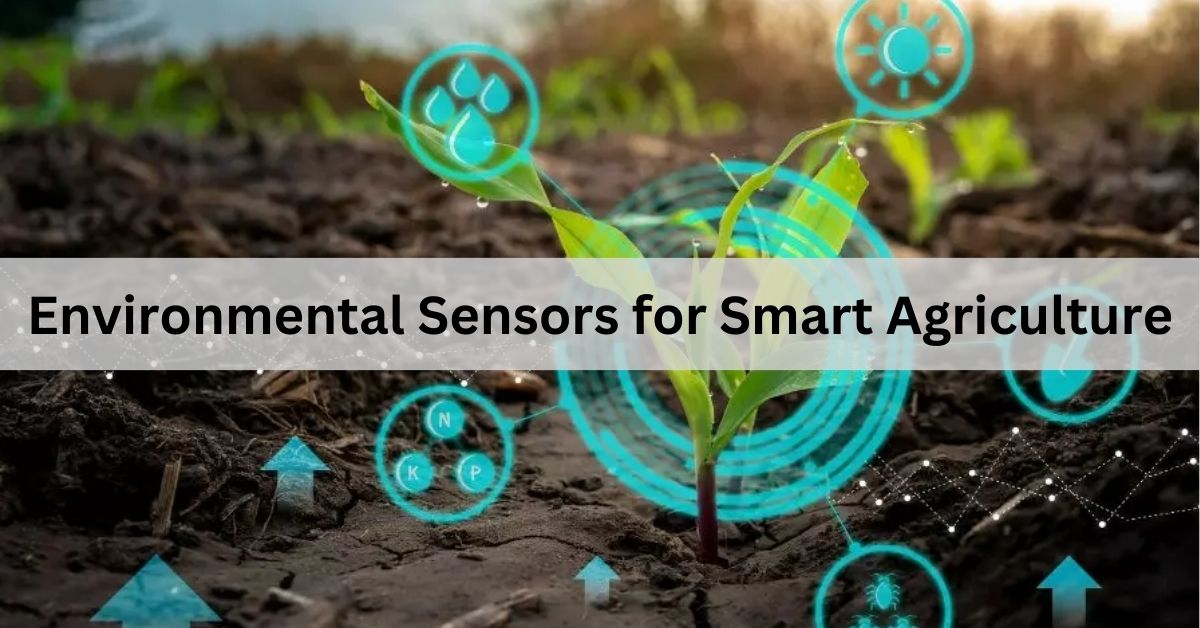The agricultural industry is undergoing a transformative revolution, thanks to the advent of smart technologies. One of the most significant advancements in this realm is the use of environmental sensors for smart agriculture. These sensors provide real-time data on various environmental factors, enabling farmers to make informed decisions, optimize resource usage, and enhance crop yields. This article delves into the different types of environmental sensors used in smart agriculture, their benefits, and how they contribute to sustainable farming practices.
Contents
- 1 Understanding Environmental Sensors in Agriculture
- 2 Types of Environmental Sensors
- 3 Benefits of Environmental Sensors
- 4 Enhancing Crop Yields
- 5 Sustainable Farming Practices
- 6 Integration with IoT and Big Data
- 7 Challenges and Solutions
- 8 Case Studies of Successful Implementation
- 9 Future Prospects
- 10 Conclusion
Understanding Environmental Sensors in Agriculture
Environmental sensors are devices that detect and measure specific environmental parameters. In the context of agriculture, these sensors can monitor soil moisture, temperature, humidity, light levels, and other crucial factors that affect crop growth. The data collected by these sensors is then analyzed to provide insights into the optimal conditions for crop production, helping farmers to improve efficiency and productivity.
Types of Environmental Sensors
Several types of environmental sensors are employed in smart agriculture, each serving a unique purpose. Soil moisture sensors measure the water content in the soil, helping farmers to determine the right time and amount of irrigation needed. Temperature sensors monitor the ambient and soil temperature, providing data that can influence planting schedules and frost protection measures. Humidity sensors measure the air moisture levels, which is crucial for preventing diseases caused by excess humidity. Light sensors track the amount of sunlight reaching the crops, ensuring they receive adequate light for photosynthesis. Additionally, pH sensors monitor soil acidity, which is vital for maintaining soil health and nutrient availability.
Benefits of Environmental Sensors
The integration of environmental sensors in agriculture offers numerous benefits. One of the most significant advantages is the ability to optimize water usage. By accurately measuring soil moisture levels, farmers can avoid over-irrigation and under-irrigation, both of which can harm crops. This not only conserves water but also reduces energy costs associated with irrigation systems. Furthermore, environmental sensors help in early disease detection. By monitoring humidity and temperature, farmers can identify conditions that favor the growth of pests and diseases, allowing them to take preventive measures. This proactive approach minimizes crop loss and reduces the reliance on chemical pesticides, promoting a healthier and more sustainable farming environment.
Enhancing Crop Yields
Environmental sensors play a crucial role in enhancing crop yields. By providing real-time data on environmental conditions, these sensors enable farmers to make precise adjustments to their farming practices. For instance, if soil moisture sensors indicate low water levels, farmers can promptly irrigate the fields to prevent water stress in plants. Similarly, temperature and light sensors help in optimizing planting schedules and ensuring that crops receive adequate sunlight. These timely interventions lead to healthier plants and higher crop yields. Moreover, the data collected by environmental sensors can be used to develop predictive models, allowing farmers to anticipate and mitigate potential issues before they affect crop productivity.
Sustainable Farming Practices
The use of environmental sensors aligns with the principles of sustainable farming. By optimizing resource usage and minimizing waste, these sensors contribute to the overall sustainability of agricultural practices. For example, precise irrigation based on soil moisture data reduces water wastage and conserves this valuable resource. Similarly, monitoring soil pH and nutrient levels ensures that fertilizers are used efficiently, reducing the risk of nutrient runoff and environmental pollution. Furthermore, early disease detection through humidity and temperature monitoring reduces the need for chemical treatments, promoting eco-friendly farming practices. Overall, environmental sensors help in creating a more sustainable and resilient agricultural system.
Integration with IoT and Big Data
The integration of environmental sensors with the Internet of Things (IoT) and big data analytics further enhances their utility in smart agriculture. IoT platforms connect multiple sensors across the farm, allowing for seamless data collection and analysis. This interconnected system provides a comprehensive view of the farm’s environmental conditions, enabling farmers to make data-driven decisions. Big data analytics, on the other hand, processes the vast amounts of data generated by these sensors to uncover patterns and trends. These insights can be used to optimize farming practices, predict crop performance, and improve overall farm management. The synergy between environmental sensors, IoT, and big data is revolutionizing the agricultural landscape, making it more efficient and productive.
Challenges and Solutions
Despite the numerous benefits, the adoption of environmental sensors in agriculture is not without challenges. One of the primary challenges is the cost of sensor installation and maintenance. High-quality sensors and IoT systems can be expensive, posing a financial barrier for small-scale farmers. However, as technology advances and becomes more affordable, the cost of sensors is expected to decrease, making them accessible to a broader range of farmers. Another challenge is the complexity of data analysis. While sensors generate a wealth of data, interpreting this data requires specialized knowledge and skills. To address this, many companies are developing user-friendly software and mobile applications that simplify data analysis and provide actionable insights to farmers.
Case Studies of Successful Implementation
Several case studies highlight the successful implementation of environmental sensors in smart agriculture. For instance, a vineyard in California used soil moisture sensors to optimize irrigation, resulting in a 20% reduction in water usage and improved grape quality. Similarly, a wheat farm in Australia employed temperature and humidity sensors to monitor crop conditions, leading to a significant decrease in disease incidence and higher yields. These examples demonstrate the practical benefits of environmental sensors and their potential to transform traditional farming practices.
Future Prospects
The future of environmental sensors in agriculture looks promising, with ongoing advancements in sensor technology and data analytics. Researchers are exploring the use of advanced sensors that can detect a broader range of environmental parameters, including soil nutrients and atmospheric gases. Additionally, the integration of machine learning algorithms with sensor data is expected to enhance predictive modeling and decision-making. As technology continues to evolve, environmental sensors will play an increasingly vital role in shaping the future of agriculture, making it more efficient, sustainable, and resilient.
Conclusion
Environmental sensors are revolutionizing the agricultural industry by providing real-time data on crucial environmental factors. These sensors enable farmers to optimize resource usage, enhance crop yields, and adopt sustainable farming practices. The integration of IoT and big data analytics further amplifies their benefits, making agriculture more efficient and productive. Despite the challenges, the future of environmental sensors in agriculture looks promising, with ongoing advancements driving their adoption and effectiveness. As we continue to innovate and embrace smart technologies, environmental sensors will play a pivotal role in ensuring the sustainability and resilience of our agricultural systems, ultimately contributing to global food security and environmental conservation.



























+ There are no comments
Add yours